
























































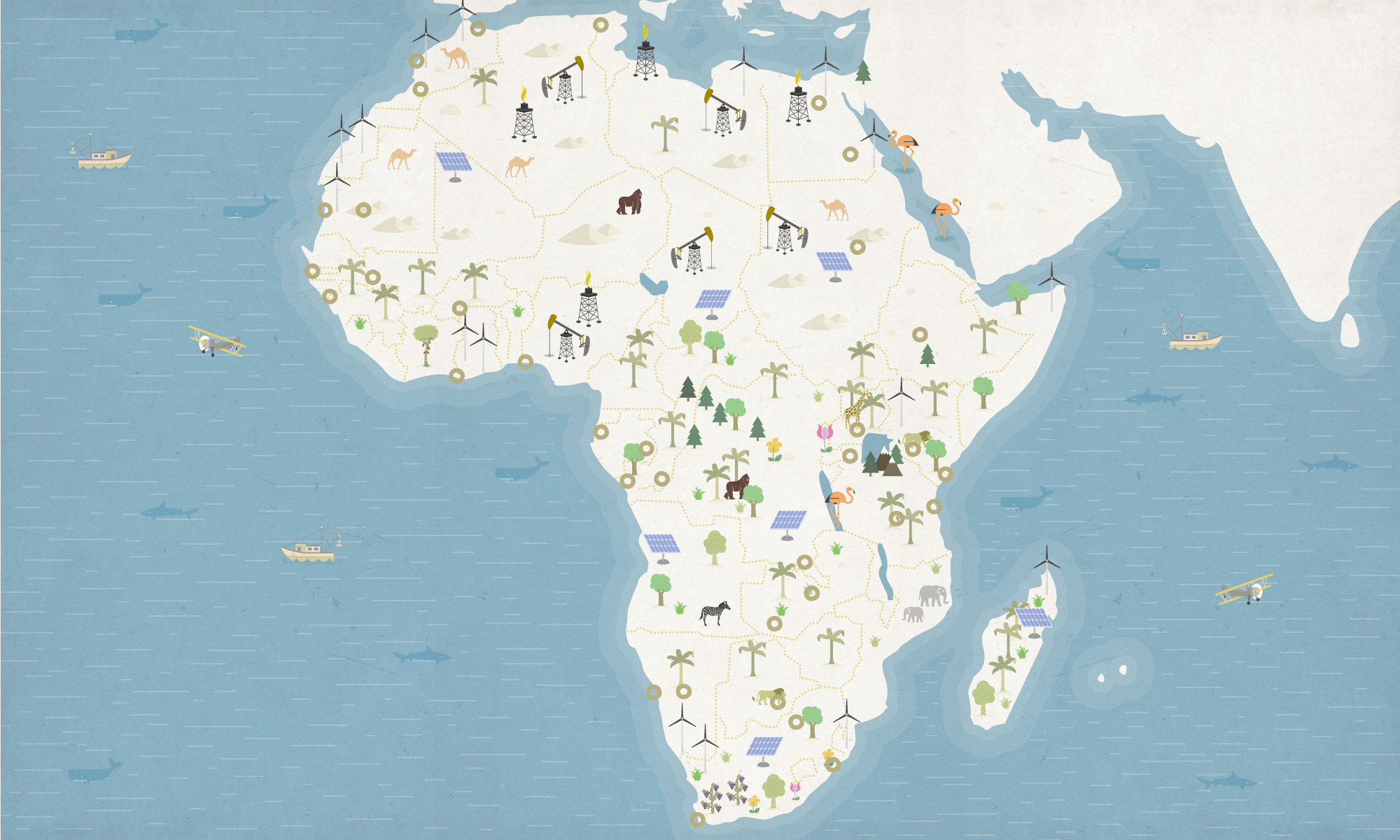
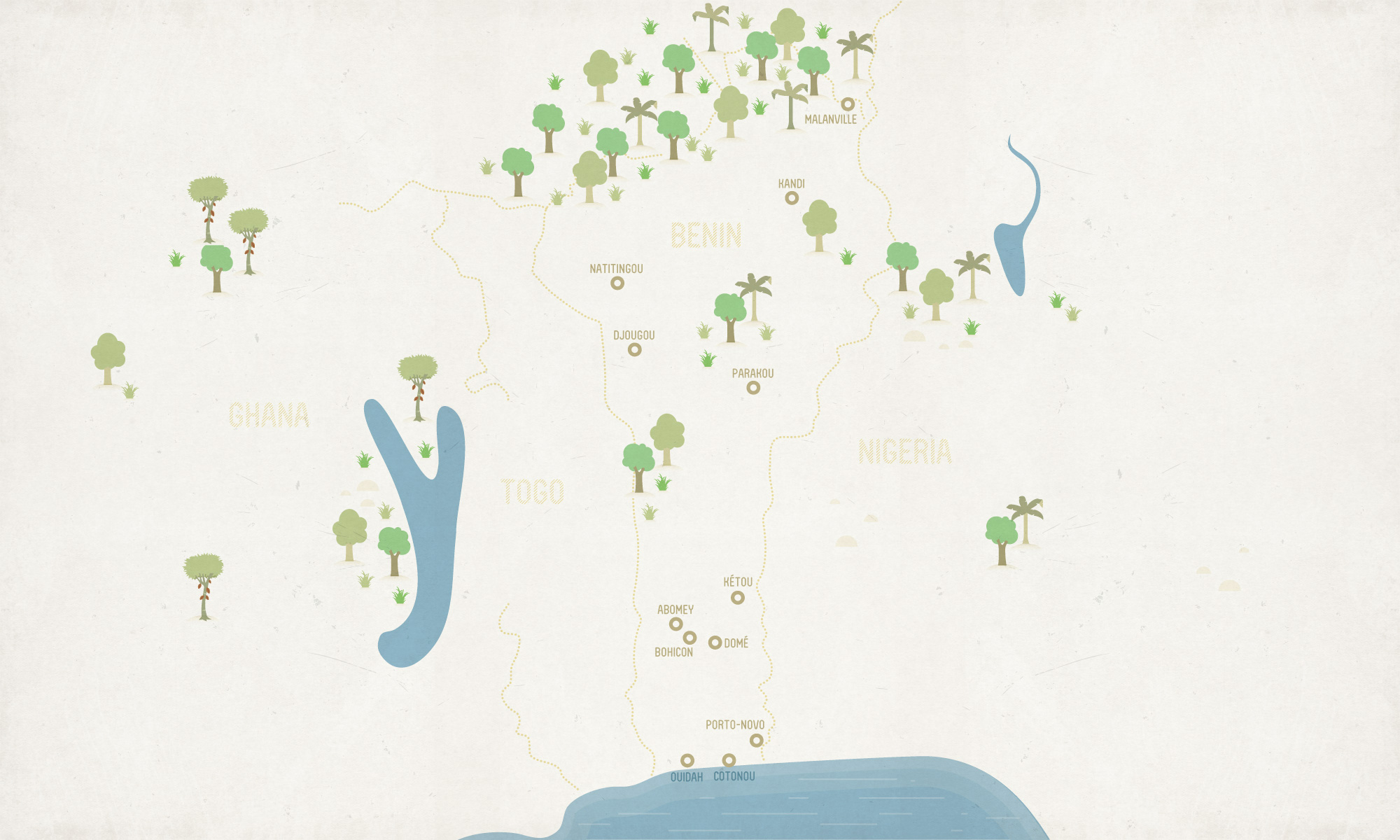

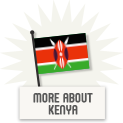
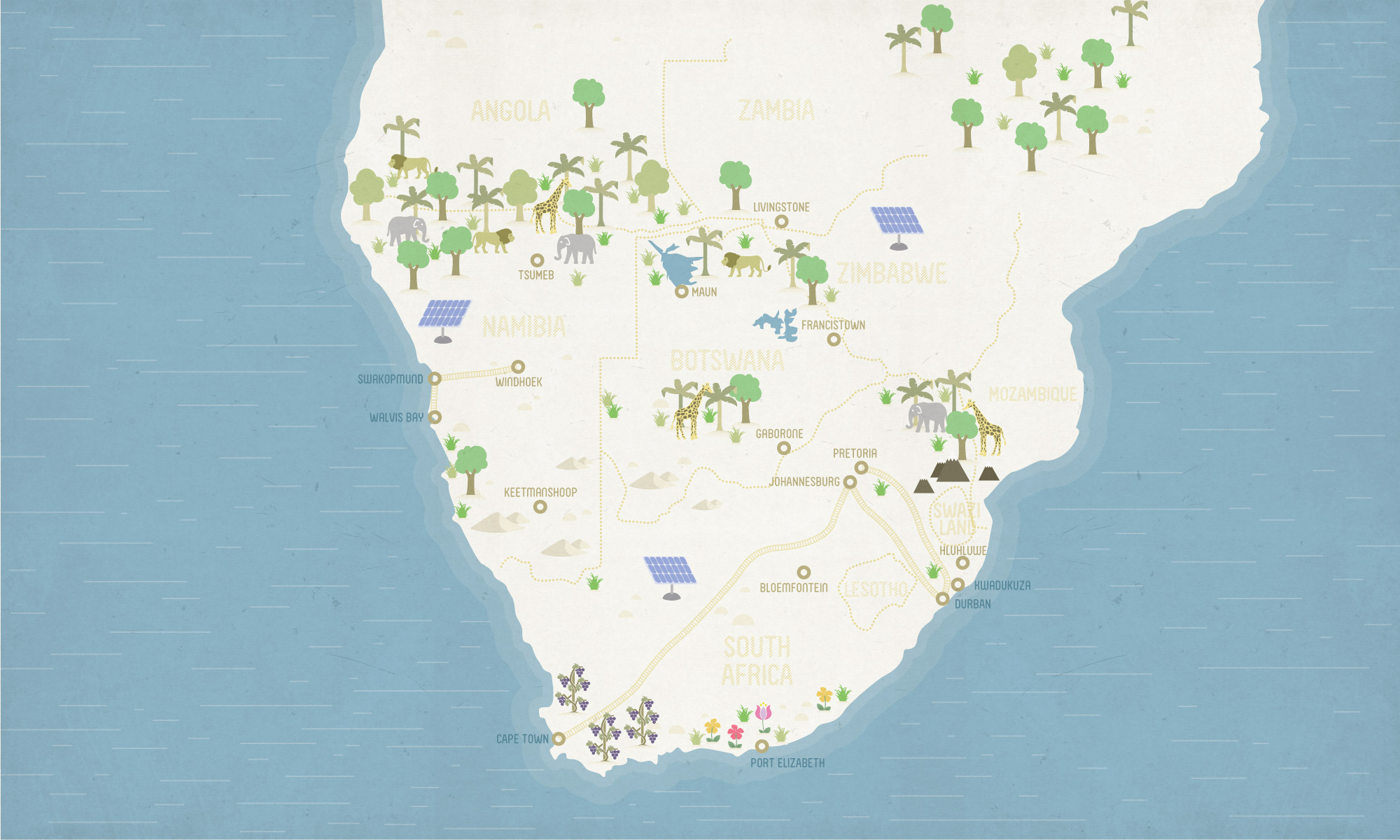

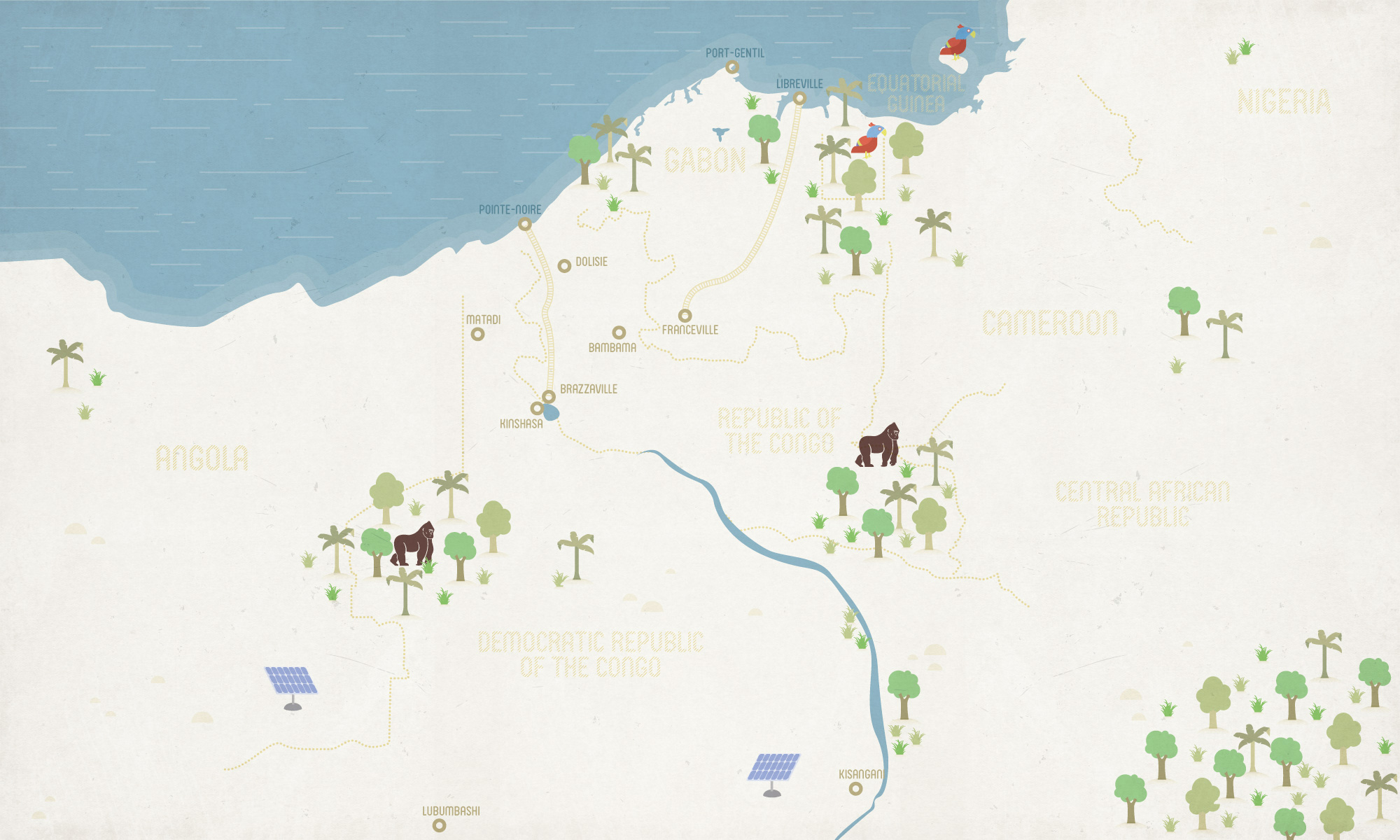
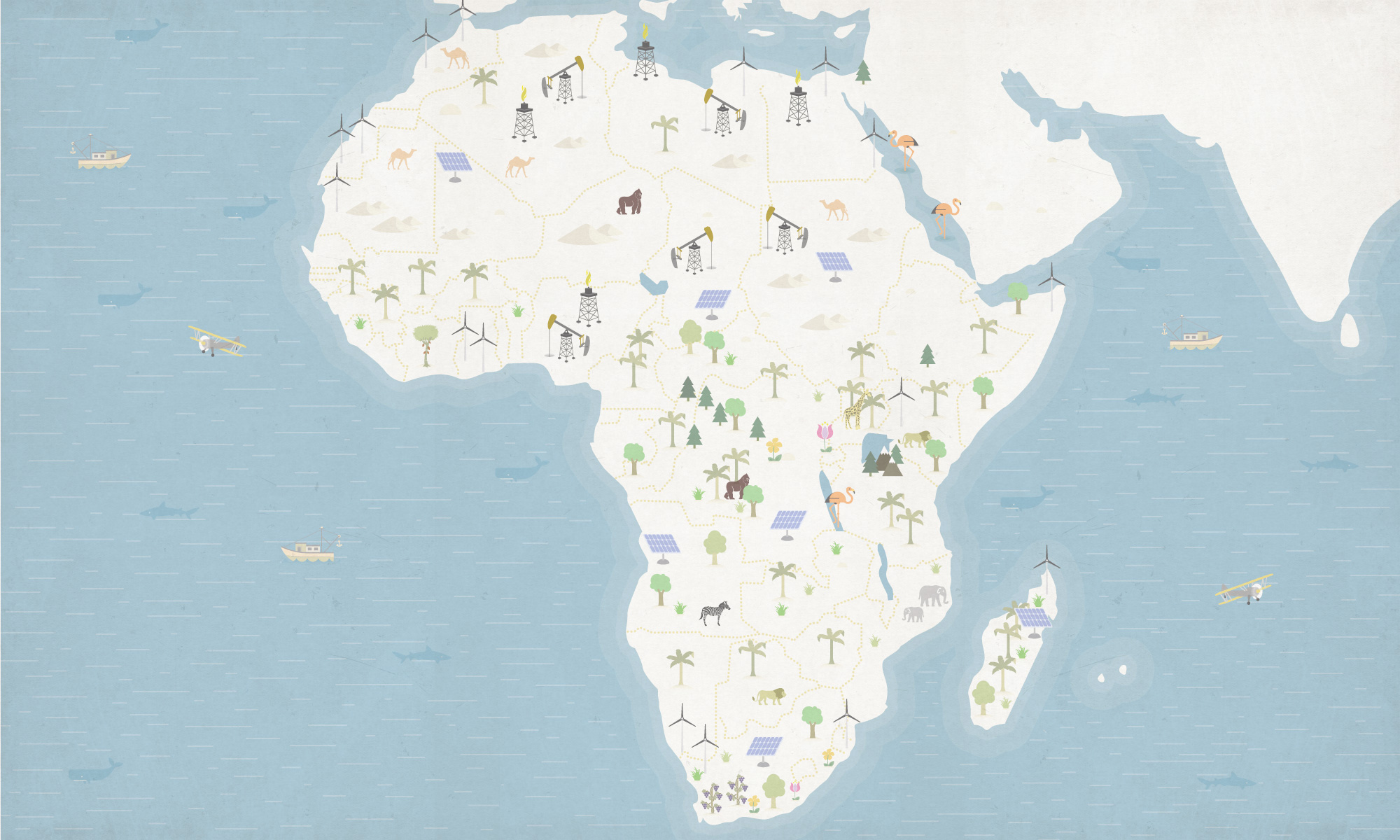


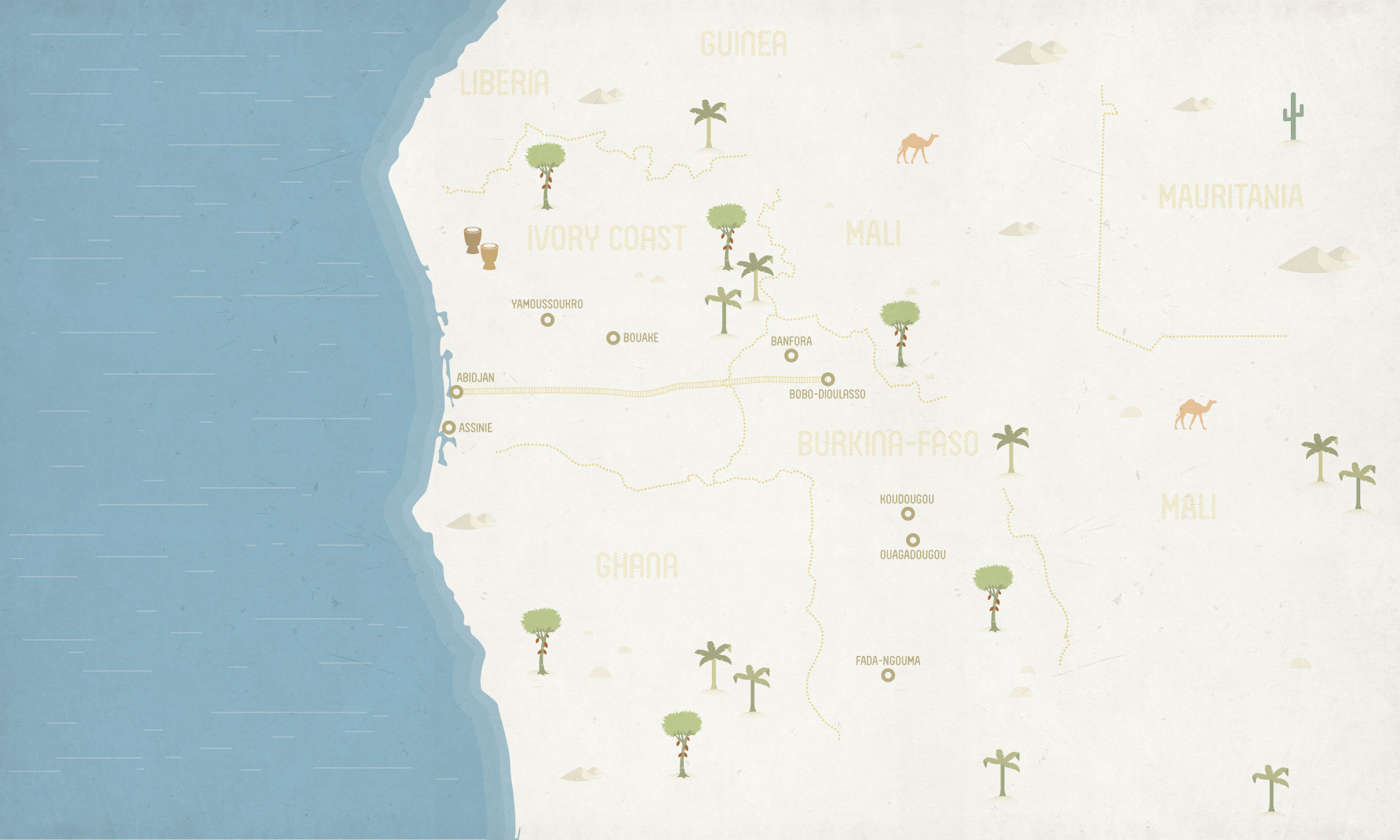

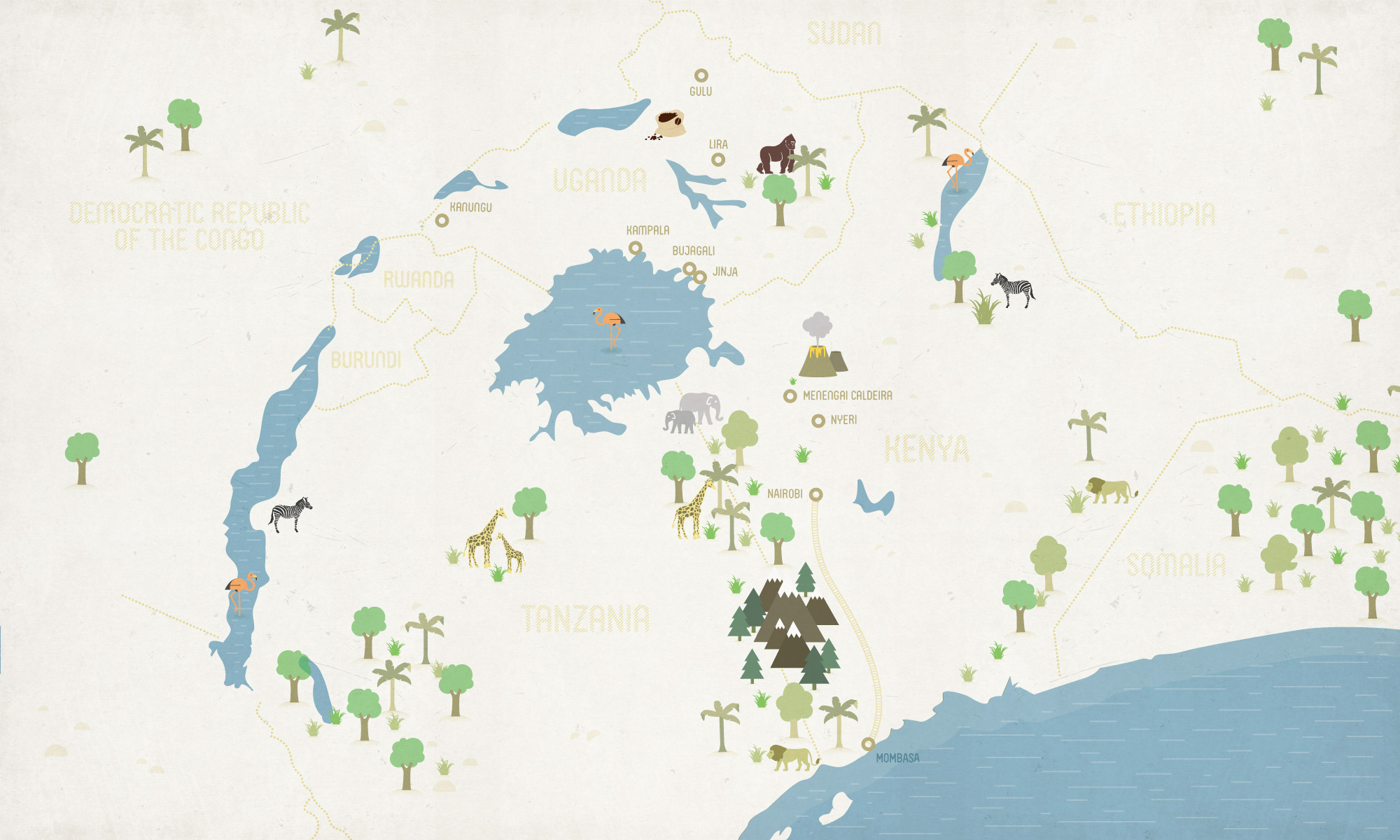


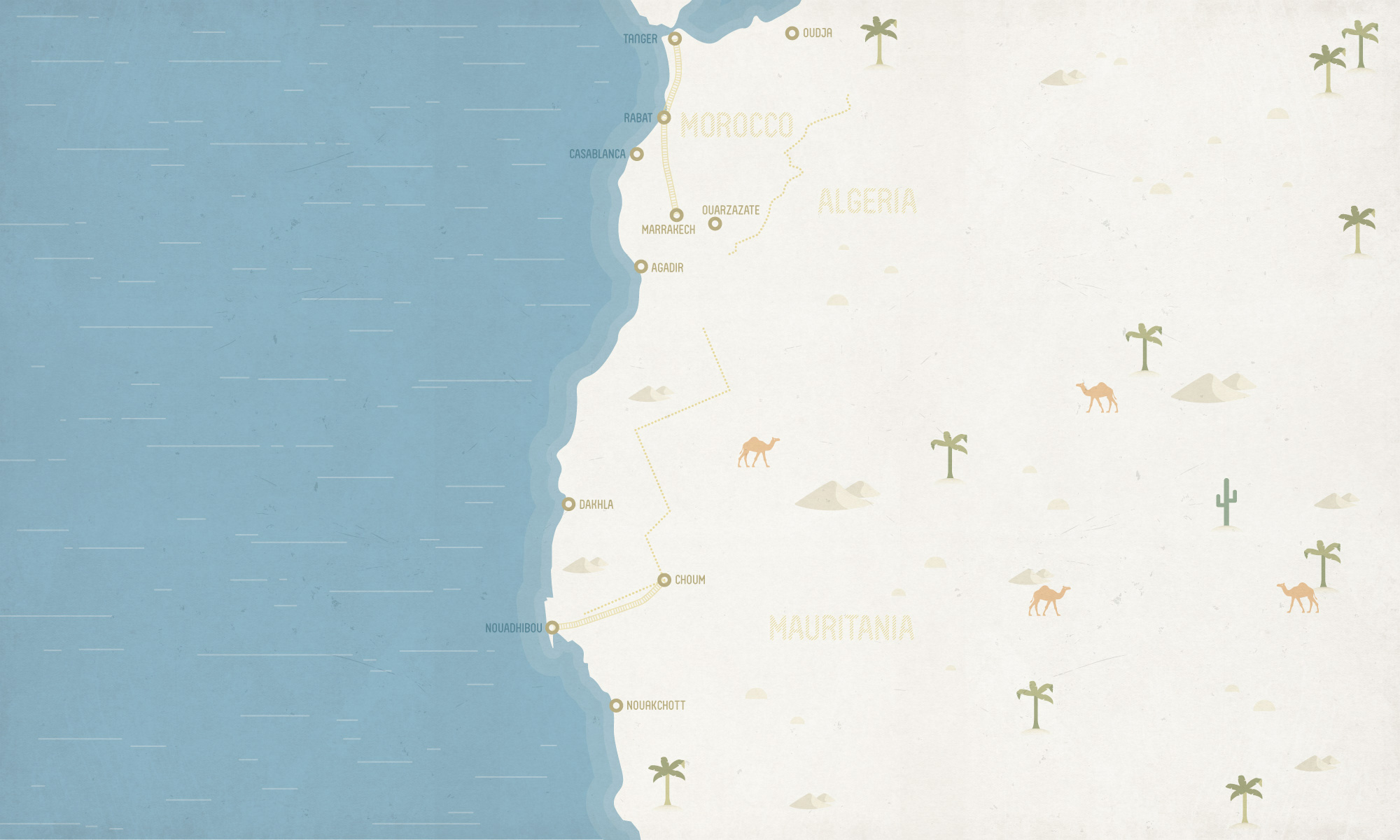
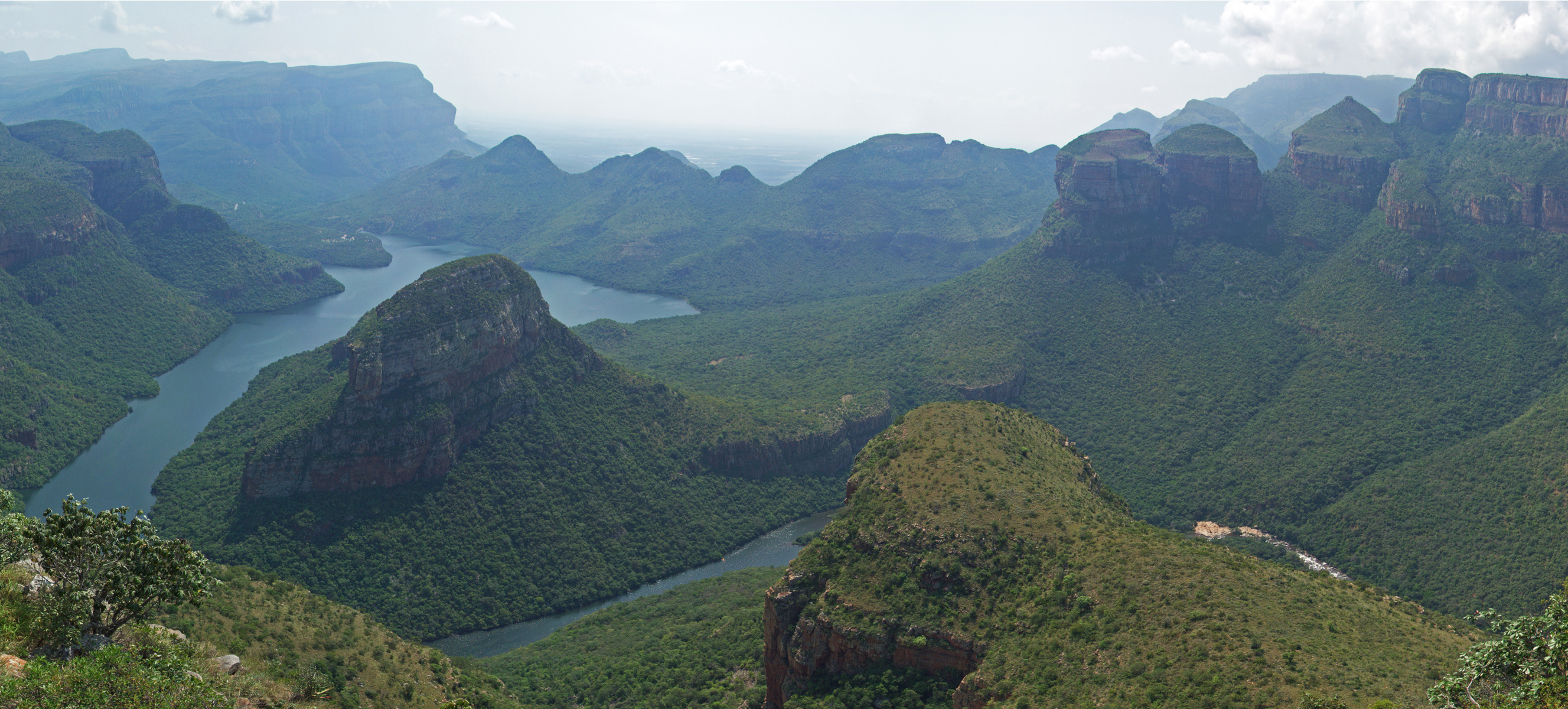

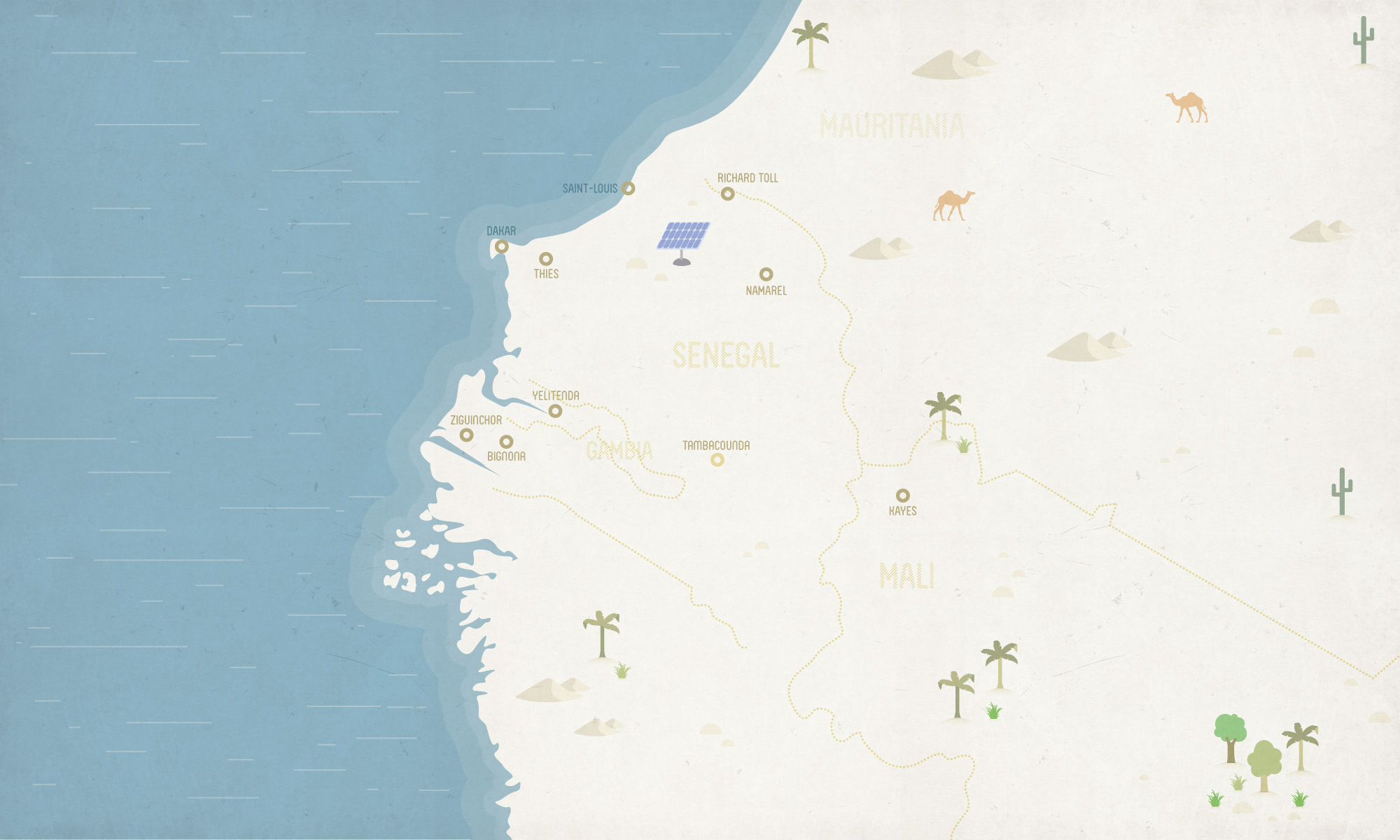



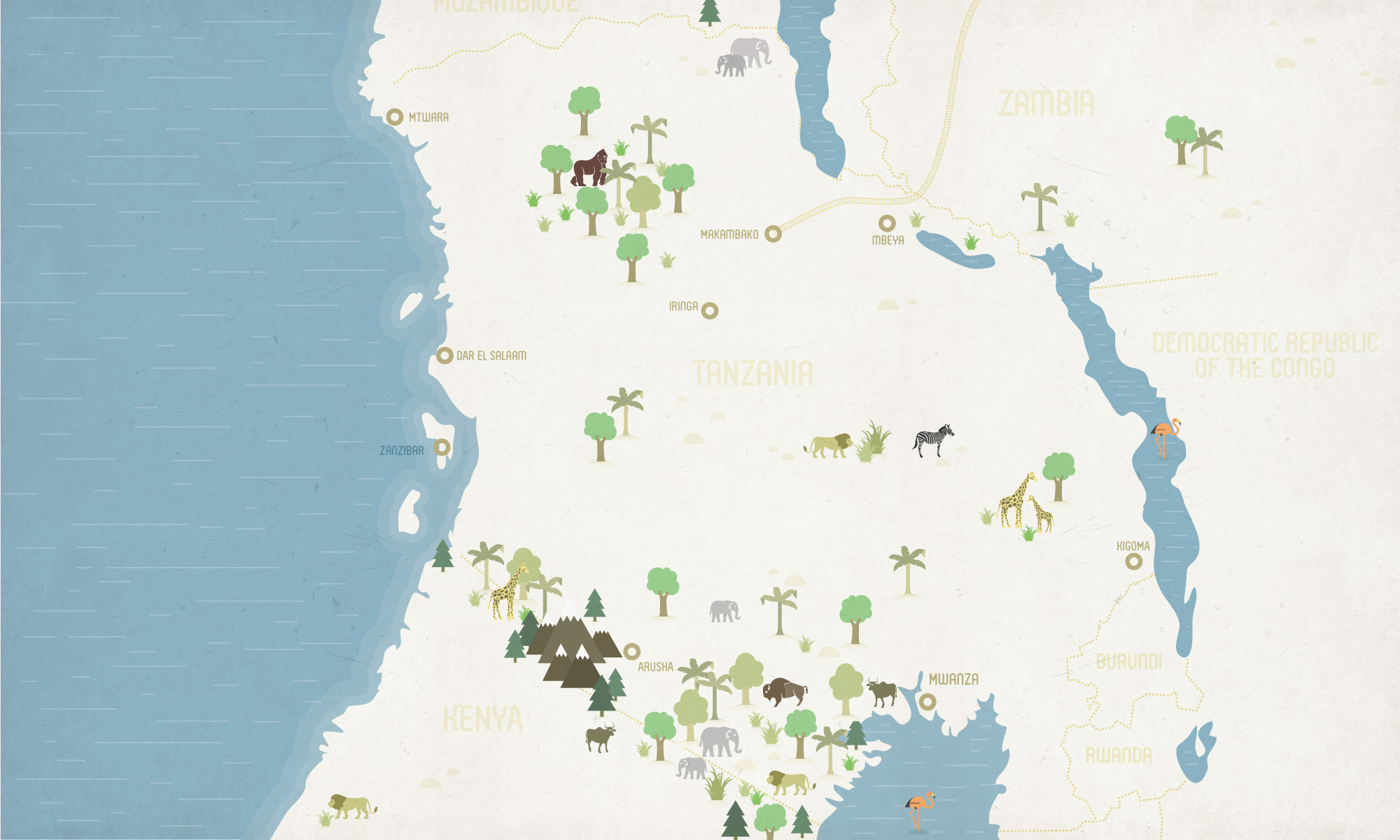
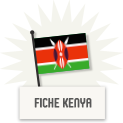
















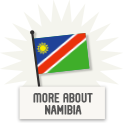

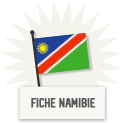

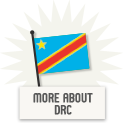

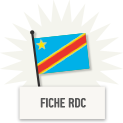










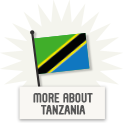










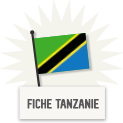



















During your trip, click on the icons to discover multimedia contents.
Chapter one
Rabbat
32.4 M hab
GDP/hab 2 865 $/y
Electrification rate : 99%
Energy consumption : 652 kWh/hab
Nouakchott
3.4 M hab
GDP/hab 919 $/y
Electrification rate : NA
Energy consumption : 112 kWh/hab
Project / Professional training and regulation of energy efficiency in buildings
Launch Year / 2009 – In progress
Developer / ADEREE (www.aderee.ma)
Buildings account for over 36% of the total energy consumption in Morocco, and controlling energy use in buildings is a huge potential source of savings. The Moroccan government hopes to reduce energy consumption in this sector by 12% as of 2020.With this goal in mind, ADEREE works with a network of partners and international property owners, and the UNDP in particular, to develop energy efficiency programs for industries and buildings.
Project / Construction of a 500MW solar thermal power plant in the Ouarzazate region
Location / Ouarzazate
Launch Year / 2012 — Under construction
Developer / MASEN (www.masen.org.ma)
95% of Moroccan electricity is imported. The country is currently facing challenges related to significant social and economic growth. According to estimates, national energy consumption will triple by 2030. To meet these new needs and reduce its energy dependence, Morocco put in place a national strategy in 2009 for the development of renewable energies, particularly wind energy (4,000 MW goal) and solar energy (4,000 MW goal).
Dakar
12.8 M hab
GDP/hab 1 018 $/y
Electrification rate : 30.1%
Energy consumption : 206 kWh/hab
Bamako
13.3 M hab
GDP/hab 689 $/y
Electrification rate : 9.3%
Energy consumption : 41 kWh/hab
Banjul
1.7 M hab
GDP/hab 546 $/y
Electrification rate : NA
Energy consumption : 98 kWh/hab
Project / Marketing and installation of solar powered cold storage chambers and milk tanks in rural areas
Location / Namarel
Launch Year / 2012 — Pilot study
Developer / Association Africa Solar Food (www.africasolarfood.org)
In West Africa, it is estimated that over 40% of crops are lost due to lack of conservation. Cesbron has developed cold storage chambers and milk tanks which run on solar energy and are designed specifically for use in developing countries. Unfortunately, at the time of our visit and to this day, the milk tank was not yet installed in a rural area.
Project / Creating an industry for construction and sale of small locally made wind turbines for pumping units
Location / Dakar
Launch Year / 2006 — Research project
Developer / EolSénégal
EolSénégal produces small wind turbines built with 95% of local materials and which provide enough energy for electricity and pumping drinking water. In 2013, EolSenegal became a business and started a serial production of wind turbines, sales and installation.
Project / Developing revenue-generating activities for Senegalese women, by means of solar energy
Launch Year / 2009 — Pilot study
Developer / Bati Africa NGO (www.batiafrica.com)
Bati Africa NGO wishes to provide sustainable energy to mothers in isolated areas so that these women can pursue income-generating activities. A preliminary study allowed for better understanding of local needs and identified 10 activities that can run on solar energy: sewing, hairdressing, repair work, mobile recharging services, cinema, Internet... Unfortunately, the project is unable to continue at this time, as subsidized funding is not yet confirmed.
Project / Transforming rural villages into ecovillages through various initiatives, including access to a clean and reliable energy service
Launch Year / 2008 — Currently underway
Developer / Schneider Electric
Schneider Electric, a partner in the project, has equipped three villages with a solar micro power plant that was specifically designed for decentralized electrification in rural areas. Equipment includes solar panels, a central battery and a charging station for portable batteries.
Project / Providing access to electricity through a pre-paid scheme
Location / Kayes Area
Launch Year / 1999 — In progress
Developer / Korayé Kurumba (KK)
Korayé Kurumba RESCO aims to increase economic activity and quality of life for the people living in the Kayes region of Western Mali. Low-tension microgrids powered by small diesel plants serve over 90% of the villagers. The remaining 10% use photovoltaic kits, with a total of 3,775 clients to date in 16 villages.
Yamoussoukro
21.6 M hab
GDP/hab 266 $/y
Electrification rate : 50%
Energy consumption : 224 kWh/hab
Ouagadougou
16.3 M hab
GDP/hab 516 $/y
Electrification rate : 13%
Energy consumption : 31 kWh/hab
Accra
24.3 M hab
GDP/hab 110 $/y
Electrification rate : 25 < 50%
Energy consumption : 289 kWh/hab
Project / Creating and organizing a sustainable energy program in West Africa through initial and continuing education of operators and other rural electricity personnel
Location / Mali and Burkina Faso
Launch Year / 2011 — Currently underway
Developer / EDF (www.formationelecruraleafrique.org)
These courses are designed to be integrated into the national training programs to provide the practical skillset for rural electrification. Existing training programs in each pilot country were listed. The learning contents are developed and/or adapted regarding the skills needed in the field. The contents of the programs cover technical skills as well as management and business administration skills.
Project / Providing electricity to schools and educational centers for literacy which serve rural populations
Location / Gourma Province
Launch Year / 2006 — Completed
Developer / ESF Midi-Pyrenees in collaboration with Tin Tua (www.electriciens-sans-frontieres.org)
Developed by Electriciens Sans Frontières (Electricians Without Borders), this project aims to support Tin Tua: a Burkinabe NGO that works to increase literacy. ESF has thus provided 14 groups of villages (diémas) of the Gulmu area with solar photovoltaic equipment to electrify administrative buildings and classrooms.
Porto Novo
9.2 M hab
GDP/hab 773 $/y
Electrification rate : 22%
Energy consumption : 81 kWh/hab
Project / Providing rural villages with electricity by installing individual photovoltaic systems and training local technicians to maintenance
Location / Hon, Koussoukpa,Domè (municipality of Zogbodomey)
Launch Year / 2009 — Completed
Developer / Beninese Association for Awareness and Development (ABED)
In Benin, only 3% of households have access to electricity in rural areas. 308 households, that is, 1,800 people, spread throughout the villages of Domè, Hon and Koussoukpa (about 25% of the population) are now equipped with individual solar panels. Each family has two 9-Wc lamps, and they are able to charge a mobile phone and plug in a radio.
Project / Developing and organizing local biofuel production for mechanical use in rural areas
Location / Benin and Mali
Launch Year / 2008 — In progress
Developer / GERES (Groupe Energies Renouvelables, Environnement et Solidarités) (http://geres.eu/)
ALTERRE is a pilot program developed by the NGO GERES whose goal is to produce and process jatropha based pure vegetable oil (jatropha being a non-food oil seed crop) for mechanical use. After a simple and cost-effective technical procedure, most motors in rural areas can be adapted to use vegetable oil in place of diesel, particularly motors used for food production, such as village mills, presses, etc.
Project / Creation of a solar power plant
Location / Ketou, Ouesse, Toviklin
Launch Year / 2012 — In progress
Developer / ECOLABS and Schneider Electric (www.ecolabs.org)
Schneider Electric partnered with Ecolabs, through the BipBop program, to help provide renewable energy to off-grid villages, especially for water treatment plant, health centres, education facilities and agricultural machinery. Schneider Electric provides the Villasol solar power plants and the individual solar kits that will be sold to customers through local companies.
Project / Center for integrated research, training and sustainable agriculture
Location / Porto-Novo
Launch Year / 1985 — In progress
Developer / Songhaï NGO (www.songhai.org)
The NGO Songhaï has served in Benin and the sub region of West Africa as a model for agricultural development and food processing that adds value to every step of the food production cycle. The Porto Novo Center and the other Songhaï centers are proof that the full cycle of food production can take place in rural areas, and that these areas can be independent financially, energetically, and agriculturally.
Chapter two
Libreville
1.5 M hab
GDP/hab 7 369 $/y
Electrification rate : 31%
Energy consumption : 1 128 kWh/hab
Brazzaville
3.8 M hab
GDP/hab 2 161 $/y
Electrification rate : 20.9%
Energy consumption : 229 kWh/hab
Kinshasa
67.8 M hab
GDP/hab 1 134 $/y
Electrification rate : 6.7%
Energy consumption : 92 kWh/hab
Project / Carbon sequestration and production of cassava and charcoal from sustainably managed forests
Location / Bateke Plateau
Launch Year / 2012 — Operational
Developer / Novacel (www.ibi-village.cd)
Novacel Company supports this project of rural development located 150 km east of Kinshasa and is animated by an economic, a social, and an environmental logic. This project is about converting 8,000 hectares of natural grassland into a successful economic agroforestry: carbon wells and cassava production center, but also wood energy to power the Kinshasa area.
Chapter three
Lusaka
13.3 M hab
GDP/hab 985 $/y
Electrification rate : < 25%
Energy consumption : 721 kWh/hab
Gaborone
1.9 M hab
GDP/hab 5 885 $/y
Electrification rate : < 25%
Energy consumption : NA
Windhoek
2.2 M hab
GDP/hab 4 230 $/y
Electrification rate : NA
Energy consumption : NA
Pretoria
50.5 M hab
GDP/hab 5 643 $/y
Electrification rate : 50 < 75%
Energy consumption : 4 818 kWh/hab
Project / Providing access to electricity through a prepaid scheme
Location / Durban
Launch Year / late 1980s — In progress
Developer / Conlog (www.conlog.co.za)
Conlog, a South African company, is the worldwide leader in prepaid electricity. The company committed to extend its technical solutions to low-income populations. Prepayment meters are connected to the national grid; they work on a reloading system. The customer buys a prepaid card from a distributor with his energy credits. After entering the code provided in the meter, electricity is ready to be used.
Project / Individual solar solutions in rural areas through a network of franchises across the country
Launch Year / 2010 — Currently underway
Developer / BPC Lesedi, a joint-venture between BPC (55%) and EDF (45%) (www.bpclesedi.co.bw)
In Botswana, 51% of the population has access to electricity. BPC Lesedi sells individual photovoltaic kits to bring electricity to off-grid rural areas. The company currently relies on a network of eight franchises in the Gaborone and Maun regions. They commercialize the 3 energy plans, maintain the equipment and collect fees from their 500 customers.
Chapter four
Dodoma
45 M hab
GDP/hab 489 $/y
Electrification rate : < 25%
Energy consumption : 69 kWh/hab
Project / Access to electricity through a network of stations offering energy services (photovoltaic solar and portable battery exchange) for small businesses and low-income families in urban and rural area
Location / Dar es Salam and Iringa
Launch Year / 2009 — Currently underway
Developer / EGG-Energy (http://egg-energy.com)
In Tanzania, 80% of the population lives within five kilometers of the power grid, but only 10% has access to electricity. Given these circumstances, portable battery rental services seem to be an effective alternative for providing basic electricity to households off grid.
Project / Providing modern energy services to 1.5 million people living in rural and peri-urban areas in East Africa
Location / Kenya, Tanzania, Uganda, Rwanda
Launch Year / 2008 — Completed
Developer / GVEP (Global Village Energy Partnership) (www.gvepinternational.org)
Since 2008, the Developing Energy Enterprises Project (DEEP) aims to increase the availability of renewable, efficient, and sustainable energy at an affordable price for populations in rural and peri-urban areas. It helped nearly 900 micro and small businesses offering solar lighting and mobile recharging services, as well as improved cook stove and biomass briquette production.
Kampala
33.8 M hab
GDP/hab 514 $/y
Electrification rate : < 25%
Energy consumption : 63 kWh/hab
Nairobi
40.9 M hab
GDP/hab 739 $/y
Electrification rate : < 25%
Energy consumption : 168 kWh/hab
Project / Local production and distribution of improved cook stoves
Launch Year / 2006 — Operational
Developer / Uganda Stove Manufacturers Limited (www.ugastove.com)
In Uganda, families spend as much as 15% of their annual income on cooking fuels. Founded in the 1980s, Ugastove Ltd is a family-owned company which produces ICS that are more energy-efficient and less air-polluting than traditional cooking methods.
Project / Distribution of improved cook stoves in rural areas
Launch Year / 2011 — In progress
Developer / UpEnergy (http://upenergygroup.com)
With a deforestation rate of 2% per year, Uganda has lost 40% of its forest mass in the last 20 years. 85% of this deforestation is attributed to overconsumption of wood used for cooking by 80% of the population. Taking this into consideration, the start-up UpEnergy has started marketing improved cook stoves (ICS) that consume nearly half the wood of traditional cooking methods.
Project / Production of 250 MW of electricity on The Blue Nile
Launch Year / 2012 — Operational
Developer / Bujagali Energy Limited (www.bujagali-energy.com)
Uganda struggles with a growing energy demand: Kampala, the capital of the country, suffers power outages for several hours almost every day. To make up for the lack of infrastructure in the country, the government is currently developing its hydroelectric potential. Building dams like the one in Bujagali makes it possible to meet growing, long-term energy needs, and to cut production costs in half when compared to combustible energy sources.
Project / Development of a 400 MW geothermal power plant in the Rift Valley in order to secure national and regional electricity production
Location / Menengai Caldera, Nakuru Region
Launch Year / 2011 — Under construction
Developer / GDC (Geothermal Development company) (www.gdc.co.ke)
Kenya has an estimated geothermal potential of 10,000 MW. Virtually untapped today, this geothermal energy could really help diversify the country's energy sources and meet the growing energy needs of East Africa. The construction site of the Menengai geothermal power plant is located 180 km northwest of Nairobi. By 2015, the project will produce 400 MW of electricity by means of 120 wells that are currently being drilled.
Project / Providing modern energy services to 1.5 million people living in rural and peri-urban areas in East Africa
Location / Kenya, Tanzania, Uganda, Rwanda
Launch Year / 2008 — Completed
Developer / GVEP (Global Village Energy Partnership) (www.gvepinternational.org)
Since 2008, the Developing Energy Enterprises Project (DEEP) aims to increase the availability of renewable, efficient, and sustainable energy at an affordable price for populations in rural and peri-urban areas. It helped nearly 900 micro and small businesses offering solar lighting and mobile recharging services, as well as improved cook stove and biomass briquette production.